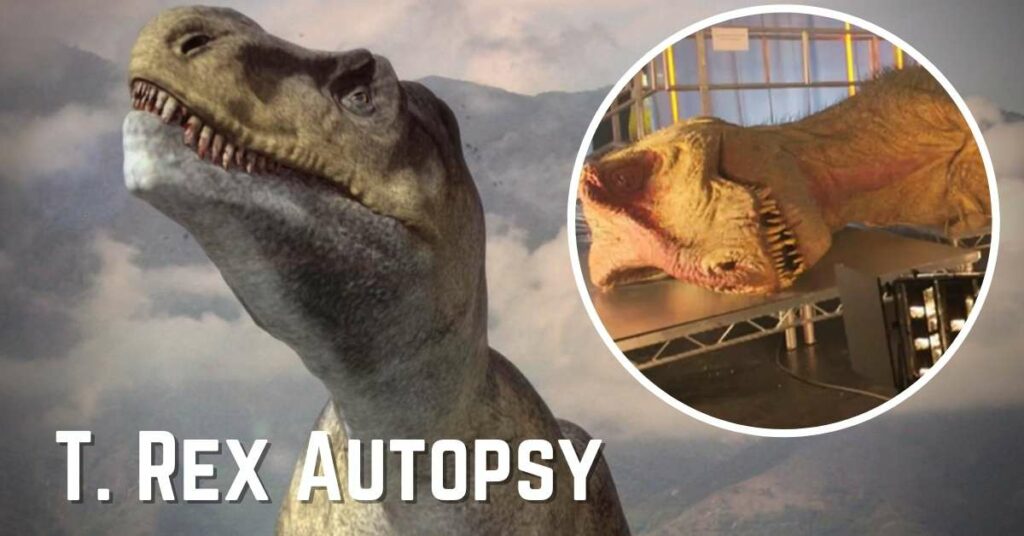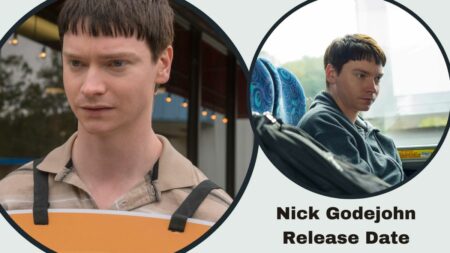Everyone seems to have “dino fever” right now, this includes the people at the National Geographic Channel, whose show “T. rex Autopsy” on Sunday night shows a dissection of the world’s first synthetic Tyrannosaurus Rex with the right bones.
A veterinary surgeon and three top paleontologists, including Stephen Brusatte, Chancellor’s Fellow at the University of Edinburgh, will do the autopsy.
Brusatte told FoxNews.com –
“I’ve been studying T. rex for a decade, but all we really have to go by are bones.”
“Up until now, my mental image of T. rex has been that of a skeleton, of the bones I study. Now my image is of the incredible model that we built for the programme.”
Crawley Creatures, a special effects company in England, talked to some of the world’s top dinosaur experts, including Brusatte, to make the 46-foot-long, 880-pound model. Real dinosaurs weighed more than 7 tonnes.
He said –
“I think the life-sized model that we built for the show is the single most realistic and accurate dinosaur that has ever been assembled.”
“It is based on everything we know about T. rex from fossils, with the unknowns filled in by reasonable inference to living crocs (close dinosaur cousins) and birds (living dinosaurs).”
The team used 34 gallons of fake blood and 34 gallons of latex rubber, polyurethane foam, silicone rubber, polystyrene, and glass-reinforced plastic to make the model.
When it came to some of the other details, they had to be a little more creative. For example, the poop was made from oatmeal, coffee, and “badger poo” which was made in a lab. In total, it took the effects house 1,000 hours of work to finish the project.
The four people who took part didn’t get to see the finished product until Pinewood Studios in London started rolling the cameras. Brusatte said that their reactions to shock were totally real. He recalled –
“I consulted on the model-making process, but I never actually saw the physical model as it was being constructed.”
“There was a fog machine, and the door opened and we walked through the fog to go face–to–face with this life–sized T. rex corpse. I was speechless. The model is beautiful, accurate, and really nails what I think T. rex looked like in the flesh.”
After getting over their initial shock, the four had to figure out how old, male or female, and why the synthetic creature had died. They were given different tools, including a chainsaw, to use during the dissection.
This helped when a leg had to be cut off to figure out how old the dinosaur was. An interesting aspect is that, just like with trees, tyrannosaur bones include growth rings that can be used to estimate the animal’s age.
Later, the team had to cut open the belly and through the rib cage to get to the insides, which Brusatte said was bloody, smelly, and fun. He said –
“I would have to say my favorite part was when I was literally able to crawl into the belly of the beast and help remove some of the organs, and then poke around to try to figure out whether it was a boy or girl dinosaur. A ‘he rex’ or a ‘she rex.’ ”
“Being inside the belly really drove home how enormous T. rex was.”
An autopsy on a synthetic Tyrannosaur that looks and acts like a real one makes for interesting and educational TV, but what do the researchers get out of it in terms of their research? How might this kind of autopsy help scientists learn more about dinosaurs?
Brusatte said, “Not really,” and added that this wasn’t the point of the project. He explained –
“I’ve spent years of my life studying bones — observing, measuring, photographing, [and] describing them.”
“Bones tell you a lot, but there can be a disconnect between bones and a living animal. Taking part in ‘T. rex Autopsy,’ and cutting up the life-sized model, helped me visualise how a real T. rex all fit together– not only the bones, but the muscles, skin, feathers, internal organs.”
“The gut was a little bigger than I thought, the teeth even more menacing on a fleshed-out skull, the internal organs much more massive than I imagined before. I will carry this image with me forever.”
So, while there will be a lot of people at “Jurassic World” on Friday, the National Geographic special on Sunday night might be a better choice for people who want to see fake dinosaurs that are real-sized and based on science.
Brusatte said –
“We’ll never be able to observe a real T. rex, or ever bring one back through DNA cloning, so I think this model is the closest we’re ever going to get.”
“And it’s great.”
Our coverage of the National Geographic Channel program “T. rex Autopsy,” which depicts the dissection of the world’s first synthetic Tyrannosaurus Rex with the correct bones, has come to an end.




